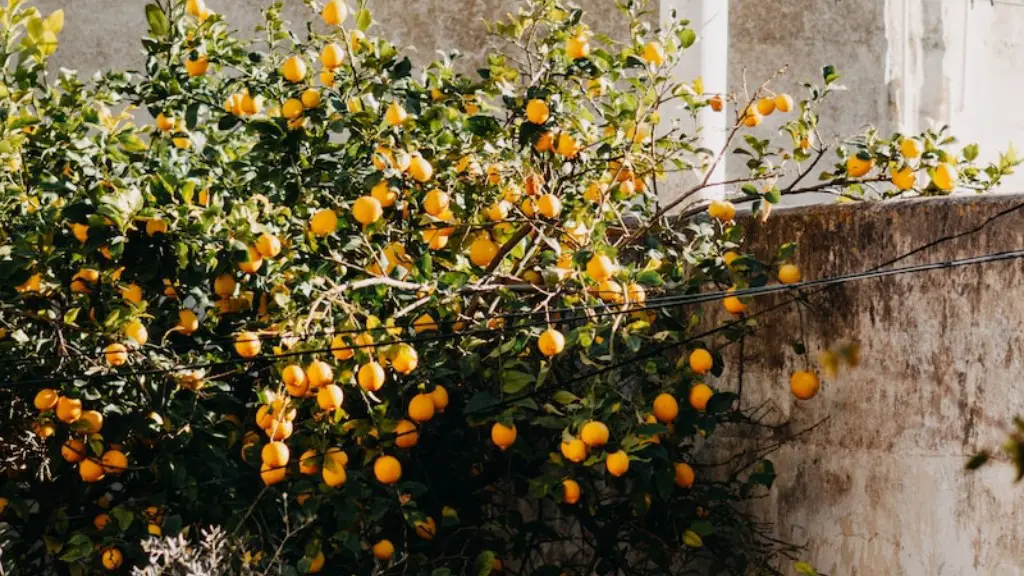Knowing when an apple tree is dead is important in making sure your garden remains healthy and thriving. Many factors can contribute to the death of an apple tree, but there are a few telltale signs that will immediately alert you if something is amiss. Here’s how you can tell if an apple tree is dead.
First, inspect the bark. Annual growth of sap-filled phloem tissue beneath the bark will cause it to bulge. There should be a defined bulge, but if it is not present, the tree might be dead. Also, take note of any cracking or areas of shedding bark, because this can be a sign of dead wood beneath.
Next, take a look at the leaves. While it’s true that the leaves of a deciduous tree will change with the seasons, a dead one will never start growing its leaves back. Take note of any leaves left on the tree, which may be discolored, dry and brittle. Also, there should be no new buds appearing at the tips of the stems.
Another quick check you can do is to look for signs of mould or slime around the base of the tree. Fungal growth is a sign of tree decay, and might correspond to the dead apple tree. Additionally, a healthy apple tree should be standing strong with a uniform trunk. If it is weakened, leaning or pulled up at one side, the tree has probably died.
When feeling uncertain, there’s always one more test you can check: the twig test. Gently bend a twig from the tree, and if it snaps easily, it is a sign that the tree has died. Otherwise, a strong, pliant twig suggests a healthy tree.
Fungal Disease
Fungal disease is one of the leading causes of death for apple trees. Symptoms may include blotchy bark, brown and yellow blotches on leaves, or dead areas on branches. The tell-tale sign is a white fungal growth on the wood or leaves, which may be accompanied by the presence of mites and other pests. If there is any discoloration or white fungus in the tree, prompt intervention and treatment will be necessary.
Winter Damage
Another possible cause of death for apple trees is winter damage. This is caused when the tree is unable to withstand the cold temperatures, either due to insufficient drainage or inadequate pruning. The most obvious sign of winter damage is broken or wilted branches, along with dead strips of bark. Additionally, the tree may have stunted growth during the following spring, or the fruit may be smaller than usual.
Nutrient Deficiencies
Nutrient deficiencies can also cause apple trees to die. A lack of certain minerals, such as nitrogen and potassium, can lead to discolored leaves and stunted growth. Additionally, a fungus called apple scab may develop, which can spread to other trees and cause damage to the roots. If the tree’s leaves appear yellowish-green, then it’s a sign of nutrient deficiency.
Pest Infestations
Finally, pests can cause death in apple trees. Aphids, mealybugs, scale insects and other pests can feed on the leaves, sap and wood of the tree, eventually weakening it and leaving it unable to produce healthy fruit. Open wounds on the trunk can be an indication of pest infestation, since pests will often settle on these vulnerable areas. Additionally, ants, spiders and mites may be present, meaning that the tree has likely been infested.
Environmental Factors
Finally, various environmental factors can also lead to the death of an apple tree. Drought, exposure to too much heat, flooding, and a lack of sunlight can all cause major damage to the tree. Additionally, changes in the PH level of the soil, excessive compaction of the earth, and erosion can also have an adverse effect on the health of the tree.
Signs of Dying
Seeing an apple tree start to die is never a pleasant sight. Signs of an ailing tree include wilting leaves, discolored foliage, and terminal branch dieback. Additionally, the fruit may be smaller, dry, hard, or discolored. Also, the bark may start to separate from the trunk, leaving behind a weakened structure.
Treatment and Prevention
Treating a damaged apple tree depends on what the underlying cause is. If the tree is suffering from fungal disease, you can treat it with fungicides, but if the tree is suffering from nutrient deficiency, you need to fertilize the soil. Additionally, if the tree has been infested with pests, you should spray an insecticide. Prevention is also key: for example, watering the tree regularly, maintaining soil health, and pruning in the winter will help prevent the death of an apple tree.


